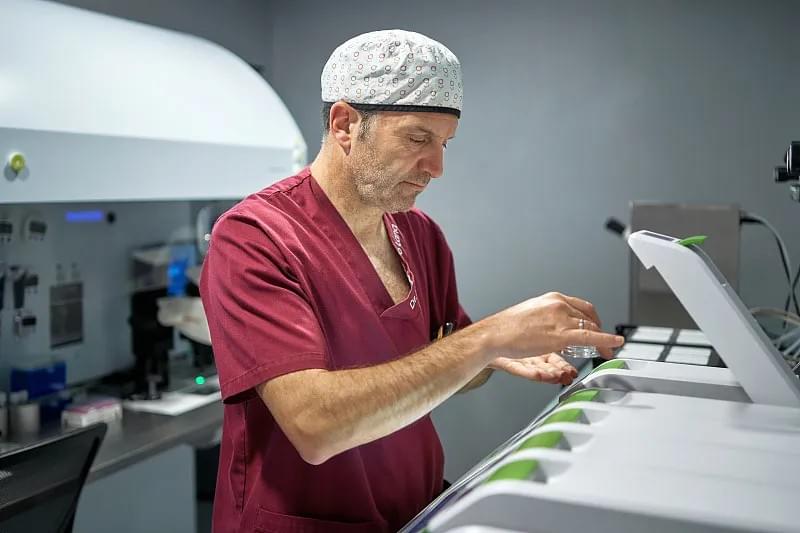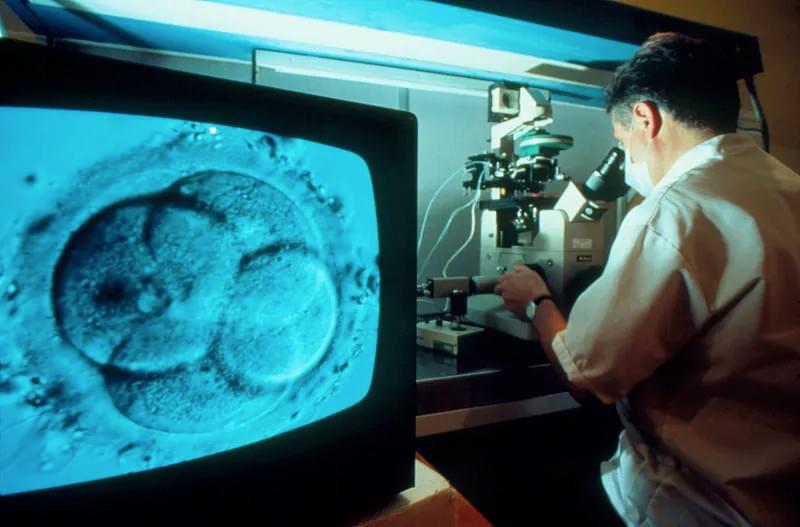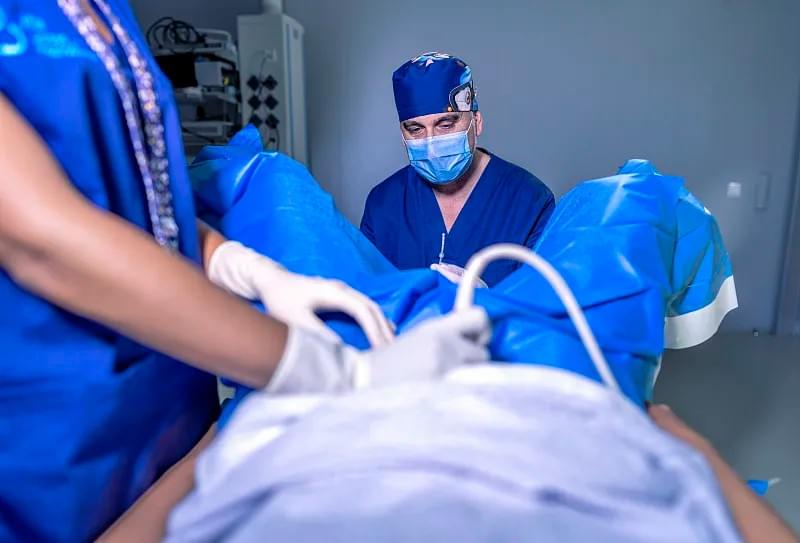Surrogacy has become an increasingly viable and celebrated pathway to parenthood for individuals and couples facing fertility challenges, medical conditions, or same-sex partners seeking to build their families. As the demand for surrogacy grows globally, one critical player stands at the heart of every successful surrogacy journey: the in vitro fertilization (IVF) clinic. While surrogacy involves legal, emotional, and logistical coordination, it is the IVF clinic that provides the essential medical foundation—transforming dreams into biological realities.
This article explores the pivotal role IVF clinics play in surrogacy programs, from embryo creation and genetic screening to synchronization with surrogate cycles and long-term patient support. Whether you're considering surrogacy as intended parents, a prospective gestational carrier, or simply seeking to understand modern reproductive medicine, this guide will illuminate why IVF clinics are not just supportive players—but indispensable architects—of surrogacy success.
Understanding the Surrogacy Process: Where IVF Begins
Before delving into the specific roles of IVF clinics, it’s important to clarify what surrogacy entails. In gestational surrogacy—the most common and legally recognized form today—the surrogate (also known as a gestational carrier) carries a pregnancy created using an embryo that is not genetically related to her. This embryo is typically formed through IVF using eggs and sperm from the intended parents or donors.
This distinction is crucial: unlike traditional surrogacy (where the surrogate uses her own egg), gestational surrogacy relies entirely on advanced reproductive technologies, primarily centered around IVF procedures performed within specialized fertility clinics.
Thus, the journey begins not with legal contracts or matching processes, but in the laboratory of an IVF clinic, where science meets hope.

1. Ovarian Stimulation and Egg Retrieval
For intended mothers or egg donors, the first major step in a surrogacy program is ovarian stimulation. IVF clinics design personalized hormone protocols to stimulate the ovaries to produce multiple mature eggs during a single cycle. This process is closely monitored through blood tests and ultrasound scans over approximately 8–14 days.
Once follicles reach optimal size, a "trigger shot" prompts final egg maturation, followed by a minor surgical procedure called egg retrieval. Performed under sedation, this outpatient procedure involves extracting eggs from the ovaries using a thin needle guided by ultrasound.
The expertise of the IVF clinic’s reproductive endocrinologists and nursing staff is vital here—not only to maximize egg yield but also to minimize discomfort and risk for the egg provider.
2. Sperm Collection and Preparation
Concurrently, sperm—whether from an intended father or a donor—is collected and processed in the IVF lab. Techniques such as sperm washing isolate healthy, motile sperm for use in fertilization. For men with low sperm count or poor motility, clinics may employ intracytoplasmic sperm injection (ICSI), where a single sperm is directly injected into each mature egg.
This level of technical precision ensures higher fertilization rates and increases the chances of developing high-quality embryos—especially important when working with limited genetic material.
3. Fertilization and Embryo Development
After retrieval and preparation, eggs and sperm are combined in the IVF lab. Depending on the case, this may involve conventional insemination or ICSI. Over the next 16–18 hours, fertilization occurs, and embryologists monitor the formation of two pronuclei—a sign of successful fertilization.
From day one onward, embryos are cultured in controlled environments that mimic the natural conditions of the human fallopian tube and uterus. Over the following 5–6 days, they develop into blastocysts—the stage most suitable for transfer due to higher implantation potential.
Throughout this phase, the IVF clinic’s embryology team plays a silent yet powerful role, maintaining optimal temperature, pH, and gas levels in incubators while documenting development milestones.

4. Preimplantation Genetic Testing (PGT)
One of the most transformative advancements in assisted reproduction is preimplantation genetic testing (PGT). Offered by leading IVF clinics, PGT allows for the screening of embryos for chromosomal abnormalities (PGT-A), single-gene disorders (PGT-M), or structural rearrangements (PGT-SR).
In surrogacy programs, PGT offers several advantages:
- Increases the likelihood of successful implantation
- Reduces the risk of miscarriage
- Helps prevent the transmission of inherited diseases
- Enables sex selection (where legally permitted)
- Allows for better decision-making when selecting which embryo(s) to transfer
For intended parents, especially those with known genetic risks or recurrent pregnancy loss, PGT provides invaluable peace of mind. The IVF clinic coordinates biopsy procedures—where a few cells are removed from the trophectoderm of a blastocyst—and partners with external genetics labs for analysis, all while safely cryopreserving the embryos until results are available.
5. Uterine Receptivity Assessment and Cycle Synchronization
A successful pregnancy depends not only on a healthy embryo but also on a receptive uterine environment. Since the surrogate is not genetically related to the embryo in gestational surrogacy, her cycle must be precisely synchronized with the embryo development timeline.
IVF clinics conduct endometrial receptivity analyses (ERA) when necessary, using molecular diagnostics to determine the optimal window for embryo transfer. More commonly, they use hormonal protocols involving estrogen and progesterone to prepare the surrogate’s endometrium.
Ultrasound monitoring tracks endometrial thickness and pattern, ensuring it reaches the ideal trilaminar appearance—typically 7–10 mm thick—before transfer. This synchronization between the embryo’s developmental stage and the surrogate’s uterine lining is meticulously managed by the clinic’s medical team.
6. Embryo Transfer: The Critical Moment
The embryo transfer is often the most anticipated moment in any surrogacy journey. Conducted as a brief, non-invasive outpatient procedure, it involves placing one or more embryos into the surrogate’s uterus via a thin catheter inserted through the cervix.
Performed under ultrasound guidance, the transfer requires both technical skill and experience. The goal is to deposit the embryo(s) at the optimal location—usually 1–2 cm from the uterine fundus—to maximize implantation chances.
While seemingly simple, this step represents the culmination of weeks of medical planning, laboratory work, and emotional investment. Many intended parents choose to be present during the transfer, making it a deeply personal event facilitated by the compassionate care of the IVF clinic staff.

7. Post-Transfer Support and Pregnancy Monitoring
The role of the IVF clinic doesn’t end after embryo transfer. For the next 9–12 days, the surrogate continues hormone supplementation (typically progesterone) to support early implantation. A blood test measuring beta-hCG levels confirms whether pregnancy has occurred.
If positive, the clinic continues monitoring hCG trends and performs early ultrasounds to verify fetal heartbeat and viability. Once clinical pregnancy is established (around 6–8 weeks), many programs transition care to an obstetrician or maternal-fetal medicine specialist. However, the IVF clinic often remains involved, especially if complications arise or additional cycles are needed.
Emotional support is another key component. IVF clinics frequently offer counseling services or referrals to mental health professionals experienced in third-party reproduction, helping all parties navigate the complex emotions surrounding surrogacy.
8. Cryopreservation and Future Family Planning
Not all embryos created during a surrogacy cycle are transferred immediately. High-quality surplus embryos can be vitrified (rapidly frozen) and stored for future use—allowing intended parents the option to expand their family without undergoing another full egg retrieval cycle.
Reputable IVF clinics maintain secure, state-of-the-art cryobanks with continuous monitoring systems to ensure long-term embryo viability. They also provide clear documentation and consent forms regarding storage duration, ownership, and future disposition options.
This capability enhances the value of the initial surrogacy investment and supports long-term family-building goals.
Why Choosing the Right IVF Clinic Matters
Given the central role of IVF clinics in surrogacy, selecting the right facility is paramount. Key factors to consider include:
- Success Rates: Review live birth rates per embryo transfer, particularly for patients in similar age groups or diagnostic categories.
- Experience with Surrogacy: Some clinics specialize in third-party reproduction and have dedicated coordinators familiar with legal and logistical nuances.
- Laboratory Quality: State-of-the-art labs with time-lapse imaging, advanced incubators, and skilled embryologists improve outcomes.
- Genetic Testing Capabilities: Access to comprehensive PGT services can significantly impact success and reduce risks.
- Patient-Centered Care: Compassionate communication, multilingual staff, and psychological support enhance the overall experience.
- Legal and Ethical Compliance: Ensure the clinic operates within national regulations and collaborates with accredited surrogacy agencies and legal experts.
Intended parents should schedule consultations with multiple clinics, ask detailed questions about protocols, and assess how well the team listens and responds to individual needs.
Collaboration Between IVF Clinics and Surrogacy Agencies
While IVF clinics handle the medical aspects, surrogacy agencies manage matching, legal contracts, financial arrangements, and emotional support. The most successful programs thrive on seamless collaboration between these entities.
For example:
- The agency identifies and screens potential surrogates, who are then medically evaluated by the IVF clinic.
- Legal agreements are drafted with input from both the clinic (regarding medical procedures) and the agency (regarding compensation and rights).
- Coordinators from both sides communicate regularly to align timelines, appointments, and expectations.
This integrated approach minimizes delays and misunderstandings, ensuring a smoother journey for everyone involved.

Global Trends and Accessibility
The landscape of surrogacy and IVF is rapidly evolving. Countries like the United States, Georgia, Greece, and Mexico have emerged as international hubs due to favorable laws, advanced medical infrastructure, and experienced clinics.
However, regulatory frameworks vary widely. Some nations ban commercial surrogacy; others restrict it based on marital status or sexual orientation. IVF clinics operating in these regions must stay abreast of changing legislation and adapt their practices accordingly.
Telemedicine has also expanded access, allowing intended parents from overseas to consult with specialists, review test results, and participate in key decisions remotely—though certain procedures still require physical presence.
As technology advances and societal acceptance grows, IVF clinics are poised to play an even greater role in shaping the future of global family building.
Ethical Considerations and Patient Advocacy
With great power comes great responsibility. IVF clinics involved in surrogacy must uphold the highest ethical standards, including:
- Ensuring informed consent from all parties
- Protecting the autonomy and well-being of surrogates
- Avoiding exploitative practices, especially in cross-border cases
- Maintaining transparency about success rates and risks
- Respecting cultural, religious, and personal values
Accreditation bodies such as the Society for Assisted Reproductive Technology (SART) and the American Society for Reproductive Medicine (ASRM) provide guidelines that reputable clinics follow. Patients are encouraged to verify credentials and seek independent advice when needed.
Conclusion: The Heartbeat Behind Every Surrogacy Success Story
Surrogacy is more than a medical procedure—it’s a profound human experience built on trust, science, and compassion. At the core of this intricate process lies the IVF clinic: the place where life begins in a petri dish, where genetic legacies are preserved, and where futures are carefully nurtured.
From hormone injections to embryo transfers, from genetic screening to post-pregnancy follow-ups, IVF clinics orchestrate the delicate symphony of events that make surrogacy possible. Their expertise, technology, and empathy turn biological possibility into lived reality for countless families worldwide.
For intended parents embarking on this journey, choosing a skilled and compassionate IVF clinic isn’t just a logistical decision—it’s the first step toward holding your child in your arms.
If you’re exploring surrogacy as a path to parenthood, take the time to research clinics thoroughly, ask questions, and find a team that aligns with your values and vision. Because behind every newborn’s first cry in a surrogacy program, there’s an IVF clinic that helped make it happen.
Looking to start your surrogacy journey? Contact our partner network of accredited IVF clinics specializing in third-party reproduction. Schedule a free consultation today and take the first step toward building your family.
